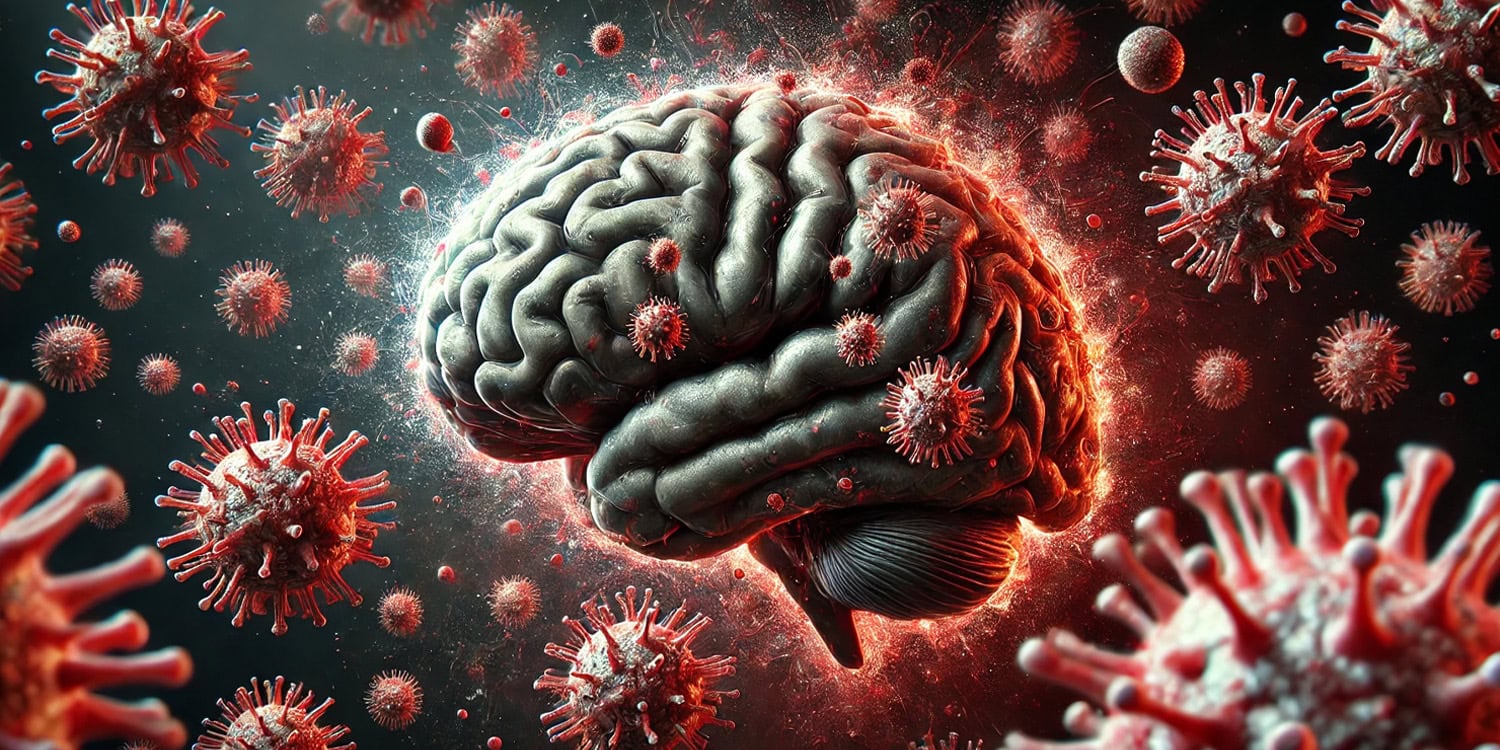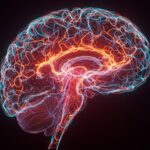A new study published in Brain, Behavior, and Immunity has found that young adults who have recovered from COVID-19 show distinct patterns of brain activity during cognitive tasks, even if they perform normally on those tasks. These brain activity changes are similar to those seen in much older adults and are particularly pronounced in individuals reporting “brain fog.” The research suggests that COVID-19 may have subtle, yet significant, effects on brain function that are not always captured by standard cognitive tests.
Scientists have been increasingly concerned about the long-term effects of COVID-19, especially on cognitive function. Since the emergence of the virus in late 2019, it has spread globally, infecting hundreds of millions of people. While older adults and individuals with pre-existing conditions are known to be more vulnerable to severe illness from COVID-19, young adults have been disproportionately affected by infection rates, partly due to the role of university campuses as potential hubs for virus transmission.
Adding to these concerns, a significant number of individuals who recover from COVID-19 report experiencing ongoing cognitive problems, including difficulty concentrating, memory issues, and mental fatigue—symptoms collectively known as “brain fog.” This is particularly worrisome for young adults, whose brains are still developing and who are at a critical stage in their education and career development.
Previous research has shown that other respiratory infections, like influenza and even the common cold, can temporarily impact cognitive function. Building on this knowledge, scientists began to investigate whether COVID-19 could also lead to lasting cognitive impairments. Initial studies focusing on individuals hospitalized with COVID-19 found evidence of problems with attention, memory, and executive functions, which are higher-level cognitive skills that include planning and decision-making.
Intriguingly, some research suggested that cognitive impairment after COVID-19 might be more prevalent or pronounced in younger, non-hospitalized individuals compared to older adults. This prompted scientists at the University of Otago in New Zealand to specifically investigate the cognitive effects of COVID-19 in a population highly representative of young adults: undergraduate university students.
“With so many people reporting ongoing issues related to COVID-19, we were keen to see if university students might show evidence of ongoing effects that they might not be aware of. Particularly as more and more of the population became infected, it seemed important to determine whether people show long-term effects,” said study author Liana Machado, a professor of psychology and neuroscience.
To conduct their study, the researchers recruited 94 undergraduate students from the University of Otago. The average age of the participants was approximately 20 years old, with the age range spanning from 18 to 46 years. The majority of participants were female (89%). The researchers first gathered information about the students’ history of COVID-19 infection. They asked participants whether they had ever been infected with COVID-19, and if so, whether they had received a positive test result from a rapid antigen test or a polymerase chain reaction test, both used to confirm COVID-19 infection.
Based on their self-reports, the students were divided into two groups: those who had a confirmed past COVID-19 infection and those who did not. Among those with prior infection, the researchers also asked about the number of infections, the time since their last infection, any complications they experienced, and whether they had experienced brain fog as a result of COVID-19.
All participants then underwent a comprehensive neuropsychological assessment. This involved completing a series of computerized cognitive tests designed to measure various aspects of cognitive function, including basic reaction speed, attention, the ability to control impulses, the ability to switch between tasks, working memory (the ability to hold information in mind and manipulate it), and spatial memory. In addition to the cognitive tests, the students also completed mood questionnaires to assess their current emotional state, rating themselves on scales for feelings such as sadness, energy, tension, happiness, tiredness, and calmness.
During the cognitive testing, the researchers used a technique called near-infrared spectroscopy (NIRS) to monitor brain activity. NIRS is a non-invasive brain imaging method that uses infrared light to measure changes in blood flow in the brain. It works by placing sensors on the scalp that emit and detect near-infrared light, which can penetrate the skull and measure the levels of oxygenated and deoxygenated hemoglobin in the brain tissue beneath. Changes in hemoglobin levels reflect changes in brain activity, as active brain regions require more oxygen.
In this study, the NIRS device was positioned on the students’ foreheads to measure activity in the prefrontal cortex, a brain region at the front of the head that is heavily involved in higher-level cognitive functions. The researchers recorded brain activity both during rest periods before and after the cognitive tests and continuously throughout the cognitive tasks themselves. This allowed them to compare brain activity during cognitive engagement between students with and without a history of COVID-19.
The researchers found that while, on average, students with a history of COVID-19 performed similarly to uninfected students on the cognitive tests, a significant proportion of the COVID-19 group—37%—showed objective evidence of cognitive impairment. This was defined as scoring significantly below the average performance of the uninfected group on at least one cognitive test. However, Machado told PsyPost that a “more thorough analysis would be needed to clarify the significance of this.”
The most striking finding emerged from the brain activity data. The NIRS measurements revealed that students with a history of COVID-19 displayed distinct patterns of brain activity in the prefrontal cortex during the cognitive tasks. Specifically, they showed less of a decrease in oxygenated hemoglobin levels compared to the uninfected group.
In simpler terms, during cognitive tasks, brain activity typically leads to changes in blood flow and oxygen levels. In healthy young adults, this often appears as a decrease in oxygenated hemoglobin in the prefrontal cortex during these tasks—a pattern observed in the uninfected students in this study. However, students with prior COVID-19 infection showed less of this typical decrease, suggesting a different pattern of brain activation.
“I was quite surprised to find such strong hemodynamic effects, particularly in the context of the generally healthy young adult population,” Machado said. “Given that young adults are in their prime in terms of brain development, and thus tend to be fairly resilient, I was not necessarily expecting to see any significant long-term effects on the brain.”
Interestingly, this altered pattern of brain activity in the COVID-19 group was reminiscent of patterns previously observed in older adults, who often show increased or different brain activity during cognitive tasks compared to younger adults, possibly reflecting compensatory mechanisms or age-related changes in brain function. This altered brain activity pattern was particularly evident in the right side of the prefrontal cortex and was even more pronounced in students who reported experiencing brain fog following COVID-19.
“At this stage, the implications of the hemodynamic effects are unclear and I don’t have any reason to think that people should feel alarmed by them,” Machado clarified. “Nevertheless, the findings indicate that people may be experiencing some ongoing effects that we hope to get further insight about soon.”
The researchers acknowledge several limitations to their study. The sample was primarily composed of female psychology students from a single university, which might limit how broadly the findings can be applied to other populations. The control group of uninfected students was relatively small. It is also possible that some individuals in the control group might have had asymptomatic COVID-19 infections that were not detected.
For future research, the scientists suggest studying more diverse groups of people to see if these findings hold true in different populations. They also plan to investigate factors that might make some individuals more susceptible to cognitive changes after COVID-19 than others.
“This year we plan to run a study to determine whether the pattern of results replicates in another sample of university students, and hopefully gain more insight about factors that might be important in determining the extent to which people are affected,” Machado said. “In the future, I would like to run a similar study in older adults, who I anticipate will show stronger evidence of ongoing issues due to greater vulnerabilities, although we would first need to secure funding.”
The study, “COVID-19 may Enduringly Impact Cognitive Performance and Brain Haemodynamics in Undergraduate Students,” was authored by Ronan McNeill, Rebekah Marshall, Shenelle Anne Fernando, Olivia Harrison, and Liana Machado.




